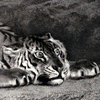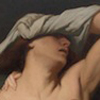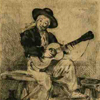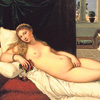...who served as Picasso’s model for this work. Each portion offers a different perspective. The shapes are more jumbled than the small square patches painted in the work by Cézanne, which seems to be highly organized when compared to the portrait done by Picasso. The patches in the Picasso portrait clutter the canvas.
Both works have areas that are unrefined, and both works may be considered unfinished. Cézanneoften left work seemingly unfinished. This is because these works were the product of a “terrible puzzle” that Cézannefelt he could not fully resolve. The puzzle refers to the task of portraying multiple viewpoints of a three dimensional object onto a single two-dimensional picture plane (Baumann 2000, 85). An unfinished area of a given painting undermines figurative representation (ibid 66). Although representational, Cézanneplays with subtle abstraction in his Self Portrait with a Beret, and Picasso almost completely abstracts his model in Portrait of a Woman. Both works have unfinished areas and have abstract elements, thus undermining the convention of figurative representation.
Cézanne’s effort to portray multiple viewpoints on a single picture plane caused a paradigm shift (ibid 85). Cézanne refutes the academic tradition of one point perspective in his Self Portrait with a Beret, as he does in his landscape scenes and still lives. By taking on the “terrible puzzle” that is the portrayal of multiple viewpoints on a single picture plane in Self Portrait with a Beret and other works Cézanneoffered a catalyst for Cubism and abstraction in the art world. Picasso and the Cubists pushed the idea of rendering multiple perspectives on a tableau, creating works such as Portrait of a Woman that are completely or partially abstract. Although never having studied in Cézanne’s atelier, Picasso was a pupil of Cézanne’s.

















